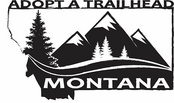|
Noxious Weed Awareness Week
June 2-8, 2024
|
|
Noxious Weed Prevention
What is prevention? Prevention is the first line of defense against noxious weed invasions. Over the long-term, it is more cost effective to prevent weeds from establishing than begin treatment after establishment. Noxious weeds have a destructive impact on our landscape. They displace native plant species, increase soil erosion, and decrease wildlife habitat and recreational opportunities.
Prevention measures can be many different things, such as increasing education and outreach, washing vehicles, boats, and other equipment, using certified weed seed free hay, and implementing Early Detection, Rapid Response (EDRR) programs. Below are a variety of resources to learn more about preventing the spread of noxious weeds on our Montana landscape.
|
|
Montana Noxious Weed Information - Montana State University
Montana Noxious Weed Information - Montana State University
Priority 1A:
These weeds are not present or have a very limited presence in Montana. Management criteria will require eradication if detected, education, and prevention.

Early Detection, Rapid Response Program
The Early Detection, Rapid Response Program coordinates specific task force groups responsible for implementing Early Detection and Rapid Response tactics to prevent, or contain and control any reported infestations of high priority new invader noxious weeds and assist in the collaboration of efforts across the state and areas of infestation.
|

Noxious Weed Free Materials
Noxious Weed Free Materials Forage Required on Public Lands
Noxious weeds have a destructive impact on Montana's landscape, displacing native plant species, increasing soil erosion, and decreasing wildlife habitat as well as compromising recreational values. Preventing the spread of noxious weeds into our pristine back country is vital. Certified noxious weed seed free forage is required when horses or pack animals are used on public land in Montana. Government agencies and public utilities also are required to use weed free mulches, bedding materials and erosion control barriers in their work.
Learn more about how YOU can help reduce the spread of noxious weeds!
|
|
|
Native Plants and Noxious Weed Management - Montana State University Extension
This video discusses why it is important to consider native plants when managing noxious weeds. It covers how native plants contribute to healthy ecosystems, why they might be confused with noxious weeds, and why mistaking them for noxious weeds and killing or injuring them could lead to more noxious weeds. This video serves as an introduction to additional videos focused on specific noxious weed and native look-alike pairs.
Click to watch video.
Getting Deep In The Montana Weeds
The Montana Weed Control Association‘s Executive Director Becky Kington, along with Western Center Weed Coordinator Kellieanne Morris and Southeastern Area Weed Coordinator Jesse Scott talk about how the awareness week came to be, the current state of noxious weeds in Montana and what’s being done to stop them.
Click to listen.
|
|
Activities & Helpful Websites |
|

PlayCleanGo Toolkit
Use the PlayCleanGo Toolkit to Make PlayCleanGo Awareness Week Your Own (June 1-8, 2024).
|

Adopt A Trailhead Montana
Adopt a Trailhead Montana (AATM) is a cooperative volunteer program to help protect Montana’s trails from further spread of noxious weeds. The program started in 2015, and since then there have been 74 AATM kiosks installed with around 42 of those trailheads adopted.
Adopt A Trailhead Storymap
|
|
|
Other Articles and Information |
|
Great Falls High School students 'pull their share' of noxious weeds
In Giant Springs State Park Monday morning, Great Falls High School biology students teamed up with land management to learn about the detrimental effects of noxious weeds, and to pull their share. Continue reading...
Great Falls High School students 'pull their share'
'Do our part': Volunteers gather at Two Moon Park in Billings to protect natural area
BILLINGS — This week is National Invasive Species Awareness Week, highlighting the threat they pose and what can be done to prevent their spread.
On Saturday in Billings, a volunteer work party was held at Two Moon Park to wrap up the awareness week and help maintain the natural area.
It was a community effort with citizens volunteering their time to gather brush, debris, and invasive species. Continue reading...
Kelsey Boggs/MTN News | Volunteers working to burn debris, brush, and invasive species at Two Moon Park in Billings
|
|
|
|